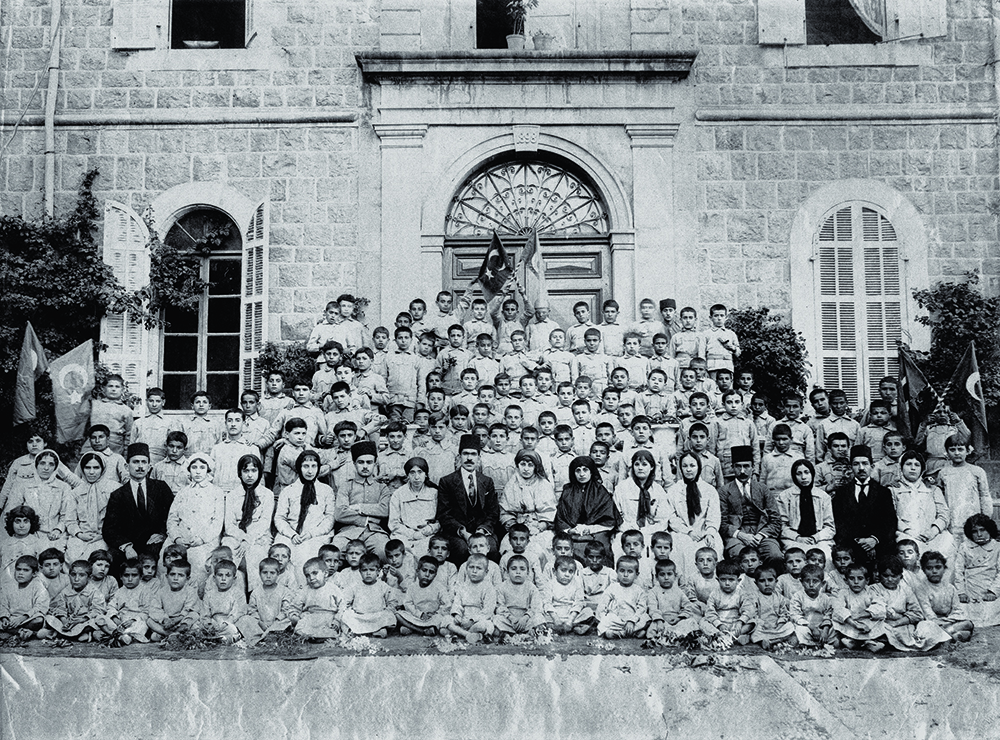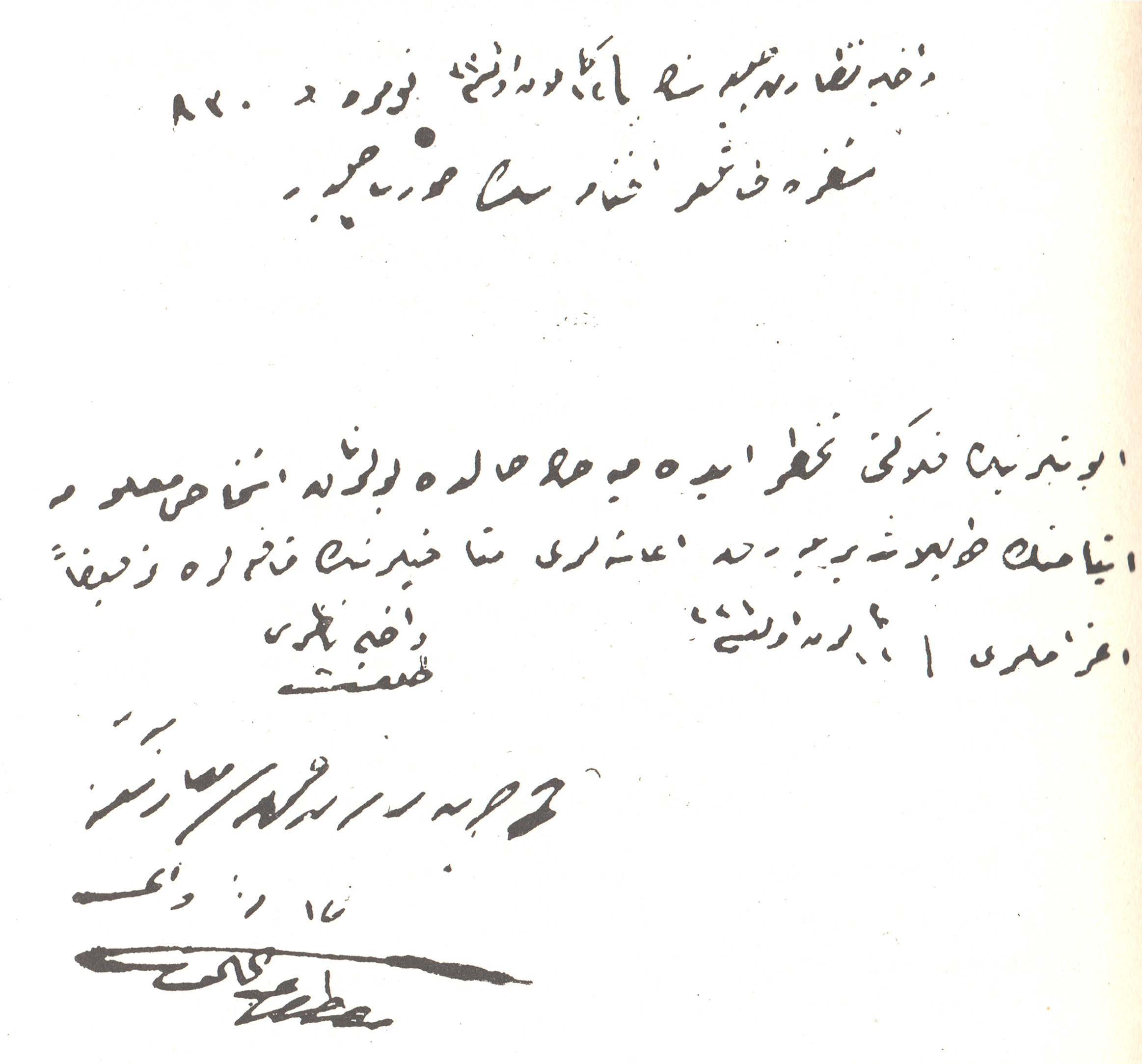30.03.2018
 Turkified Armenian orphans in the orphanage of Antura,
Turkified Armenian orphans in the orphanage of Antura,
Halide Edip is at the center
The policy of turkification and assimilation of children during the Armenian genocide was an important component of the Ottoman genocidal policy. The Ottoman documents clearly show that the Turkish government aimed at systematically assimilating the Armenian children. The process of Islamization of children and erasure of their national and religious identity was easier to implement at an early age. Famous genocide scholar Vahagn Dadryan referring to the issues of forced Islamization of Armenian children during the Armenian Genocide, notes that “the Ottoman Turks were quite appreciative of the value of the gene pool that Armenian children embodied; they were regarded as an invaluable resource for the enrichment of the mainstream of the Turkish nation”.
Forcible Islamization of Armenian children was implemented on two levels: by the state and public masses. Many Armenian children were kidnapped by Turks and Kurds, sometimes they were “adopted”, and living in an Islamic environment, they were gradually turkifyied and assimilated to that society.
Despite the state of war the Ottoman government was collecting the Armenian orphans in Turkish orphanages to Islamize and turkify them. An important document in this regard was the telegram of April 30, 1916, sent by the Department of the Racial and Immigration Regulation Division of the Ministry of Interior to almost all states.
Turkish orphanages were establishes in Merdin, Urfa, Diarbekir, Cesaria, Aleppo, Beyrut, Antura and other places.
The process of opening Turkish was launched from Aleppo. In the autumn of 1915, orphans were collected from the suburbs and the streets of the city, but as Antonyan mentions, it was not about charity, but to prevent infectious diseases, particularly typhus in the city. The authorities of Aleppo found "a real pest" for these children, appointing Nazmi, as an orphan inspector, who was killing the children with systematic cruelty and afflictions. After the British entered Aleppo, he was arrested based on the complaints from the Armenian Apostolic Church. During the interrogation it became clear, that during his tenure 3000 orphans were taken to orphanage, and only 50 of them survived. In this regard Nazmi declared that he had done it purposely, so that the building servedas an orphanage and he continud to receive his monthly salary and food as an inspector.
Swiss missionary Jacob Künzler describes the establishment of orphanage by the Turkish government in Urfa as a manifestation of Turkish "mercy". “When in the camps where Armenian children were concentrated, countless orphaned children cried and screamed, the government decided to open a new Turkish orphanage”. According to Künzler death rate in this orphanage was very high. Only half of the 1000 orphans survived during the six months.
Consul of Germany Ogan Bügen has dwelled on the problems of Armenian orphans in the Turkish orphanages of Adana. On 21 October 1915 he reported: “Director of the Turkish Orphanage explained to the pupils that they would either change their religion or will have to leave the orphanage. A great number of boys and girls left the orphanage, and the remaining 14 boys were probably Islamized. Director explained to the children that Christianity has no place in the Turkish orphanage, it was even forbidden to pray”.
There was also a Turkish orphanage in Armash, about which we became aware by the letters kept in the Aleppo National Archives. According one of these letters, 200-250 orphans were instructed to move from Aleppo, in particular from Shirazyan's orphanage, to Constantinople. Sometime later, it became known that the boys were taken to the Armash seminary and " those who were converted to Islam were put in the monastery of Armash,where they were fed and received Turkish lessons”. In his memories Zaven Patriarch mentiones that the patronage, brothers and teachers of Armash Charkhapan Saint Astvatsatsin monastery were deported to Konia in 1915, and the monastery was robbed, and a secondary school was established by the Turkish government for the province.
Another letter addressed to Bishop Artavazd Surmeyan shows that about 400 boys of 8-14 years old were sent to Constantinople from the Aaron Patveli orphanage. “There an orphanage was opened to turkify these boys, and they stayed there until the end of the war, and most of them survived”.
During the initial period of Sebastia's deportation, Armenian children and teenagers were brought to Malatya's Turkish orphanage, but by the end of 1916 they were taken and killed by a new order from Constantinople.
US Consul in Kharberd, Leslie Davis, appealed to governor on July 10, 1915 to open an orphanage on the spot, but has been abruptly rejected. The latter informed that the government is going to open orphanages. Davis notes that the government is actually setting up a number of orphanages and for some time sheltering these orphans, then adds, “Then they all disappeared and the news spread that they were taken to a lake of about twenty miles from Kharberd, and were sunk”.
The orphanage of Antura was the largest Turkish orphanage founded by the government, which, according to the children's memoirs and witness accounts was one of the most brutal by its imposed sanctions and consistent policy towards the turkification of Armenian children. Djemal Pasha was mainly engaged in the establishment of orphanages, and gathering orphans, while Halide Edip and Nigyar Khanum managed educational and organizational issues of the orphanages.
Thus, the strategy of the Young Turks aimed to deprive the target group -Armenian children - of their own biological and racial attributes and identity, gradually changing their identity.
Of course, the above-mentioned orphanages were not the only in the empire. Situation in other similar orphanages and methods deployed there for Turkification will be discussed next.
Narine Margaryan PhD in History, AGMI Senior Researcher

Interior Minister Talaat's code-telegram dated December 12, 1915, addressed to Aleppo's governor Mustafa Abdulhaili.
"Gather and feed only those orphans, who don't remember what happened to their parents. Send the rest with the caravans". Source; Antonyan A., The great crime, "Pahak", 1921, pages 187-188





